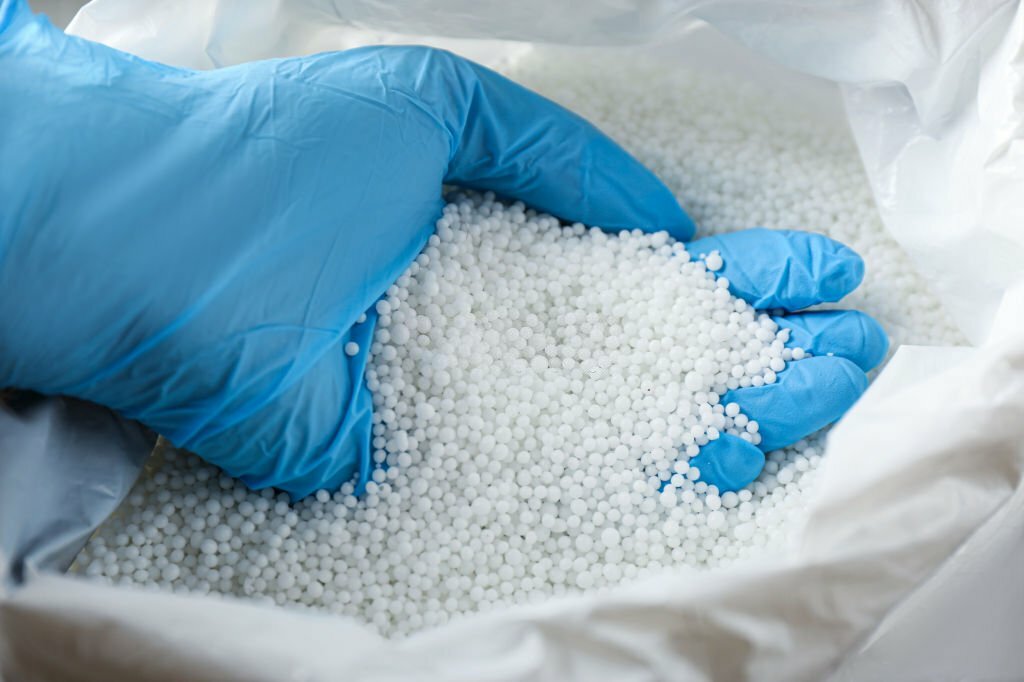Farming is an age-old profession that relies on a delicate balance of nature and human intervention. One of the key elements in this delicate dance is the use of fertilizers, often referred to as “farmers’ gold.” These essential nutrients play a crucial role in enhancing soil fertility and promoting robust plant growth. In this comprehensive guide, we’ll delve into the art of fertilizer use, providing valuable tips for farmers to ensure their fields flourish with bountiful harvests. Agrodunya Fertilizer Shop
Understanding the Basics: What Makes Fertilizers Farmers’ Gold?
Fertilizers are a blend of essential nutrients that plants need to grow and thrive. These nutrients can be broadly categorized into three main types: nitrogen, phosphorus, and potassium (NPK). Each of these elements serves a unique purpose in supporting plant development.
-
Nitrogen (N): This nutrient is vital for leafy, green growth. It promotes the synthesis of chlorophyll, the green pigment responsible for photosynthesis.
-
Phosphorus (P): Phosphorus is essential for root development, flowering, and fruiting. It plays a key role in energy transfer within the plant.
-
Potassium (K): Potassium is crucial for overall plant health, contributing to disease resistance, water uptake, and the activation of enzymes.
These three elements are the foundation of most fertilizers and are often represented by the NPK ratio displayed on the fertilizer packaging. Understanding this ratio is the first step in unlocking the potential of farmers’ gold.
Tips for Effective Fertilizer Use
1. Soil Testing: The Foundation of Fertilizer Management
Before applying any fertilizer, it’s crucial to understand the current nutrient levels in your soil. Soil testing provides valuable insights into deficiencies and excesses, allowing for precise fertilizer application. Conduct regular soil tests to tailor your fertilizer regimen to the specific needs of your crops. Buy Urea at Agrodunya Fertilizer Multan
2. Choose the Right Fertilizer Type
Not all crops have the same nutrient requirements, and different fertilizers cater to specific needs. Select fertilizers based on the crop type and growth stage. For example, nitrogen-rich fertilizers are beneficial for leafy vegetables, while phosphorus-rich ones are ideal for flowering plants.
3. Consider Slow-Release Fertilizers
While traditional fertilizers provide an immediate nutrient boost, slow-release fertilizers offer a more sustained nutrient supply. This can be particularly advantageous for crops with long growing seasons, ensuring a steady stream of nutrients over time.
4. Timing is Everything
Applying fertilizers at the right time is crucial for optimal results. Early in the growing season, focus on nitrogen to encourage vigorous vegetative growth. As plants transition to the flowering stage, shift towards phosphorus-rich fertilizers to support reproductive development.
5. Avoid Overfertilization
More is not always better when it comes to fertilizers. Overfertilization can lead to nutrient imbalances, environmental pollution, and increased production costs. Follow recommended application rates and monitor your crops for any signs of stress or nutrient deficiencies.
6. Utilize Organic Fertilizers for Sustainable Farming
In addition to chemical fertilizers, consider incorporating organic fertilizers into your regimen. These natural sources of nutrients contribute to soil health and microbial activity, promoting long-term sustainability.
7. Crop Rotation for Nutrient Management
Implementing a crop rotation strategy helps prevent nutrient depletion in the soil. Different crops have varying nutrient needs, and rotating them allows the soil to recover and replenish between planting seasons.
8. Monitor and Adapt
Regularly assess the effectiveness of your fertilizer program by monitoring crop growth, yield, and overall health. Adjust your approach based on the results and any observed changes in soil conditions.
The Future of Farmers’ Gold: Innovations in Fertilizer Technology
As technology advances, so does the field of agriculture. Farmers’ gold is now undergoing a technological revolution with innovations such as precision agriculture and smart fertilization systems. These technologies aim to optimize nutrient delivery, reduce environmental impact, and enhance overall farm efficiency.
Precision Agriculture
Precision agriculture involves using data-driven technologies such as GPS, sensors, and drones to precisely manage field variability in crops. This approach allows farmers to apply fertilizers with greater accuracy, minimizing waste and maximizing nutrient utilization.
Smart Fertilization Systems
Smart fertilization systems integrate real-time data, weather forecasts, and soil information to automate and optimize fertilizer application. These systems can adjust nutrient levels based on specific crop requirements and changing environmental conditions, ensuring a targeted and efficient use of farmers’ gold.
Conclusion: Cultivating Success with Farmers’ Gold
Mastering the art of fertilizer use is a journey that requires knowledge, adaptability, and a deep connection to the land. By understanding the specific needs of your soil and crops, choosing the right fertilizers, and embracing innovative technologies, you can unlock the full potential of farmers’ gold. With these tips, your farm can not only thrive in the present but also contribute to a sustainable and flourishing agricultural future.


